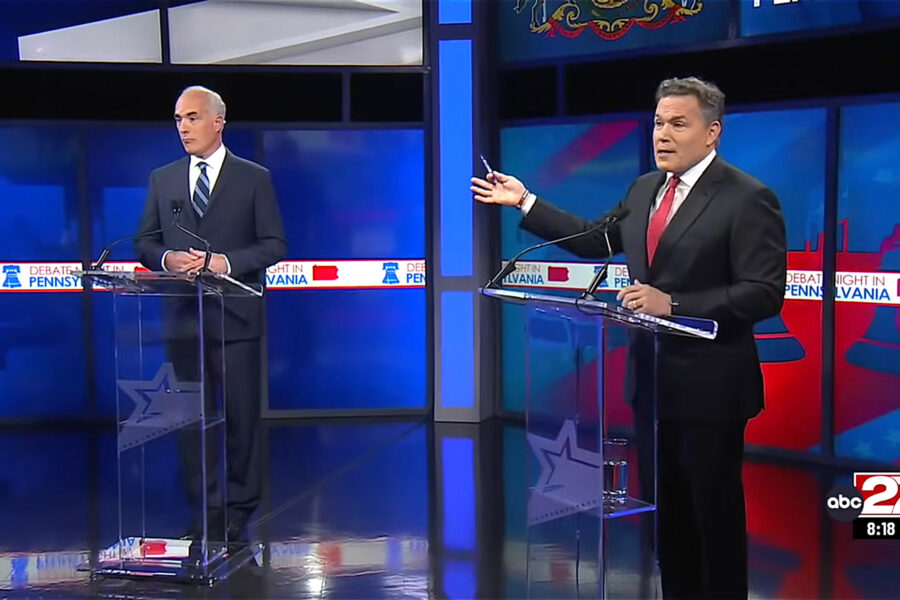California Cities Planned to Shut off Gas in New Buildings, but a Lawsuit Turned it Back On. Now What?
When Berkeley stopped enforcing its much-watched ban on gas appliances in new construction earlier this year, many city planners around California went into a temporary state of shock.
The decision followed a protracted legal battle with the California Restaurant Association, which prevailed in federal court.
“It definitely created a chill,” said Misti Bruceri, an energy efficiency consultant who has spent the last two decades working with California cities to develop “reach codes”—building codes that go beyond the state’s baseline energy code. “The momentum had really been building. So, it created a lot of uncertainty.”
When Berkeley’s ban took effect in 2019, it became a model for action. In the last four years, 70 other California cities adopted gas bans and building codes requiring electrification in new buildings, and multiple cities outside the state followed suit.
Explore the latest news about what’s at stake for the climate during this election season.
Buildings account for one quarter of greenhouse gas emissions in California and—unlike, say, airline travel and the highway system—they are subject to local control. City officials around the state saw the new codes as key to enacting their climate plans, the detailed local blueprints for reducing greenhouse gas emissions that have historically been much easier to write than implement. And while it will take years and billions of dollars to electrify existing buildings in the state, new buildings have often been seen as low-hanging fruit.
That’s why it created such a stir when a federal court ruled against Berkeley’s ban last year, and the city’s appeal fell short in January. A handful of cities, including Los Angeles and San Francisco, are sticking with their gas bans, but most have chosen to rescind their bans and pivot. The result was lost time at a key moment for cutting emissions.
Now, with new construction coming down the pike every year, cities are moving fast to make up for that time. A handful have adopted efficiency-based reach codes that, while less strict, are still forging a path toward decarbonization. And at least a dozen more such local codes are in the works this year, while the state energy code is also moving closer to making natural gas a thing of the past in California.
The Impetus for a Gas Ban
The effort to ban natural gas in Berkeley buildings dates back to 2016. Ben Gould, now a consultant working with greenhouse gas emissions data, was the chair of the Berkeley City Environment and Climate Commission at the time. The city’s climate action plan didn’t address emissions from buildings, so Gould recommended the City Council look into what it might take to ban natural gas hookups in new construction. Then, with the council’s blessing, the commission spent a year developing a plan to do that.
Shortly afterward, the California Energy Commission passed an amendment that created a baseline standard for electric heat pumps in buildings, allowing for a broader shift in the work cities could do to advance electrification locally. Gould ran for mayor of Berkeley that year and he made the gas ban a central part of his campaign platform.
“That platform helped show the other candidates that it wasn’t dead on arrival. It wasn’t a political albatross, and voters were receptive to it,” recalls Gould. And while he did not become mayor, Gould says he did get people to question their assumptions about the prevalence of gas infrastructure in California buildings. Berkeley’s current mayor, Jesse Arreguín, was elected in that cycle, and he put forward a proposal to ban natural gas just a few years later.
Reaching Decarbonization With Codes
“Prior to 2020, only a handful of cities and counties in California—Marin County, Palo Alto, Santa Monica, Berkeley, Davis—had adopted reach codes. We typically saw somewhere between 10 to 20,” recalled Bruceri. Then, between 2020 and 2022, a flood of cities jumped into the game.
The city of San Jose, which has taken an aggressive approach to reducing emissions in alignment with the Paris Agreement, passed one in 2022 alongside nearly 50 other cities. What made San Jose unique was the other reach code it passed around the same time.
San Jose’s more cautious, “backup” approach involved a single energy performance standard that is more stringent than the state code and applies to both all-electric and mixed-fuel buildings. That code “incentivized electrification” but doesn’t require it, said Julie Benabente of the city’s Environmental Services Department.
So, when it became clear that the city needed to stop enforcing the gas ban, it had the reach code to fall back on.
“The California Building Code has its own set [energy efficiency] standard, so we’re asking for a margin above that level. … And those standards would be very difficult to meet without an all-electric building,” said Benabente.
If a developer is set on including a gas appliance, it’s still possible, but it’s less likely to make financial sense, she said.
Paying for a gas line is costly, and “if you have to install a gas line, it starts looking a lot less lucrative [for the developer] if you only have, say, stoves on the line,” said Bruceri.
The central coast city of San Luis Obispo—a community facing a growing wildfire threat due to increasing temperatures and aridity—has pledged to become carbon neutral by 2035. Officials there adopted a gas ban in 2022 and then, after observing the legal battle taking place in Berkeley, suspended it and decided to pursue a code much like San Jose’s in late 2023.
In order to put a reach code in place, local jurisdictions must demonstrate that the proposed code saves more energy than current standards and is cost effective. Several experts said the downside to this approach versus straight-up gas bans is a lengthy approval process. In Santa Cruz, another city that had a gas ban and replaced it with a reach code, it took nearly six months to gain approval, said Tiffany Wise-West, the city’s sustainability and resiliency officer.
“The gas industry wants to intimidate, and they want to keep building their market for fossil fuel dependency.”
— Matt Vespa, Earthjustice senior attorney
The new code went into effect in June 2024. Wise-West said she has been in touch with around a dozen city governments that hope to pass similar reach codes this year.
When she brought the new reach code to the city council, she said it was more difficult to pass than the previous version had been. “There was definitely more resistance, and it was interesting, because it’s a less stringent code,” she recalled. “There’s a perception that we’re going to come in and tell you you can’t have a gas stove.”
By that point the idea of mandated electrification had become controversial. And the controversy may have been by design, said Matt Vespa, a senior attorney at Earthjustice. It’s clear, he added, that the California Restaurant Association lawsuit has engendered a culture of fear at a time when cities need to be moving quickly to reduce emissions—and the resulting slowdown has benefited the oil and gas industry.
“The gas industry wants to intimidate, and they want to keep building their market for fossil fuel dependency, when we obviously have to go in the opposite direction,” said Vespa.
Multiple reports have found evidence to suggest California’s big gas producers may have worked in tandem with the California Restaurant Association over the last several years. A 2023 investigation by reporters at the Sacramento Bee found that SoCalGas paid Reichman Jorgensen, the law firm representing the restaurant association, more than $4 million between 2020 and 2022. Meanwhile, the restaurant association has not reported paying the firm at all. A Bloomberg article published in May reported on a board meeting of the National Propane Gas Association at which the law firm’s founding partner and the gas association’s chief executive spoke about a letter-writing campaign aimed at “strong-arming” more cities into dropping their gas bans.
When asked for comment for this story, a spokesperson for CRA reiterated its response to the Sacramento Bee: “It is bogus to claim that SoCalGas is funding other parties’ litigation just because we use the same law firms.”
On the recent spate of efficiency-focused reach codes, the spokesperson added: “Any building codes should follow the Ninth Circuit decision, which made clear that any state or local ordinance that has the effect of preventing use of gas appliances in buildings is preempted by federal law.”
Game Changes at the State Level
The gas industry appears to be fighting an uphill battle, however, as the state energy code is also evolving. In September, the California Energy Commission approved efficiency standards for new construction that would make it difficult to avoid installing heat pumps beginning in 2026. The CEC has set a goal of installing 6 million heat pumps by 2030.
As Ben Gould sees it, “cities are acting as test beds for new policy.”
“What California has basically done is say, ‘If you want to install a gas appliance, that’s fine, but your building has to be as efficient as one that installs electric heat pump appliances.’ And because of the efficiency of heat pumps, it’s going to be harder to do that,” said Jonny Kocher, who manages the Carbon-Free Buildings Program at RMI (formerly the Rocky Mountain Institute).
“The CEC is going pretty far with this code cycle to make that happen,” added Kocher. “That will be a good floor for the whole state, and cities can then build on it if they want. I’m not a lawyer, but I think it’s a legally safe approach to hitting our heat pump goals.”
Kocher added that RMI is working on a model code for local governments outside California using a similar, efficiency-based methodology.
In the meantime, Berkeley city staff have opted to put forward a new reach code that focuses on preventing air pollution—and it will likely have a similar outcome as the gas ban. The code will require all new buildings to exclusively use appliances that don’t cause pollution from nitrogen oxides (NOx), harmful air pollutants associated with asthma and other respiratory illnesses.
The approach is similar to the one taken by the Bay Area Air Quality Management District (BAAQMD) when it passed a groundbreaking rule last year mandating the use of electric heat pump water heaters and heat pump HVAC systems beginning in 2027 and 2029, respectively. But the Berkeley code would take effect sooner.
“Even if a person doesn’t care about climate change, we all want our kids to breathe the cleanest air they can,” said Rob Jackson, a Stanford environmental scientist and author of the new book Into the Clear Blue Sky.
NOx pollution from gas furnaces and hot water heaters is piped outside the home, where they add to air pollution from transportation and industry. The most acute problem for many households, meanwhile, is the pollution leaking from their stoves. Jackson and his colleagues have done multiple studies on indoor pollution. The latest, published in May, found that gas stoves typically fill multiple rooms in the home with NOx that can linger for hours.
“Our outdoor air is increasingly cleaner,” said Jackson. “That’s the result of energy efficiency and new regulations. But we spend 90 percent of our time indoors, so we need to pay more attention to what we’re breathing from sources in our homes and buildings.”
Berkeley city staff wouldn’t comment on the code in progress, but in their recommendation, submitted to the mayor in May, they shared BAAQMD’s finding that 2019 emissions from residential natural gas combustion accounted for roughly the same amount of NOx emissions as passenger vehicles.
“However,” Berkeley staff added in the recommendation, “shifts in remote work practices since 2019 have likely increased that percentage, due to increased work hours from home and also reduced work commutes.”
And although the code focuses on electrification in response to “immediate health concerns” and promises to prevent up to 85 premature deaths and save up to $890 million in health impacts per year, the effect is likely the same: electric heat pumps in new buildings rather than gas furnaces and water heaters. The Berkeley City Council is expected to vote on the reach code—and may include an exemption for commercial kitchens—in October.
This article was produced with support from the Climate Equity Reporting Project at Berkeley Journalism.
About This Story
Perhaps you noticed: This story, like all the news we publish, is free to read. That’s because Inside Climate News is a 501c3 nonprofit organization. We do not charge a subscription fee, lock our news behind a paywall, or clutter our website with ads. We make our news on climate and the environment freely available to you and anyone who wants it.
That’s not all. We also share our news for free with scores of other media organizations around the country. Many of them can’t afford to do environmental journalism of their own. We’ve built bureaus from coast to coast to report local stories, collaborate with local newsrooms and co-publish articles so that this vital work is shared as widely as possible.
Two of us launched ICN in 2007. Six years later we earned a Pulitzer Prize for National Reporting, and now we run the oldest and largest dedicated climate newsroom in the nation. We tell the story in all its complexity. We hold polluters accountable. We expose environmental injustice. We debunk misinformation. We scrutinize solutions and inspire action.
Donations from readers like you fund every aspect of what we do. If you don’t already, will you support our ongoing work, our reporting on the biggest crisis facing our planet, and help us reach even more readers in more places?
Please take a moment to make a tax-deductible donation. Every one of them makes a difference.
Thank you,
David Sassoon
Founder and Publisher
Vernon Loeb
Executive Editor
Share this article
Disclaimer: The copyright of this article belongs to the original author. Reposting this article is solely for the purpose of information dissemination and does not constitute any investment advice. If there is any infringement, please contact us immediately. We will make corrections or deletions as necessary. Thank you.








